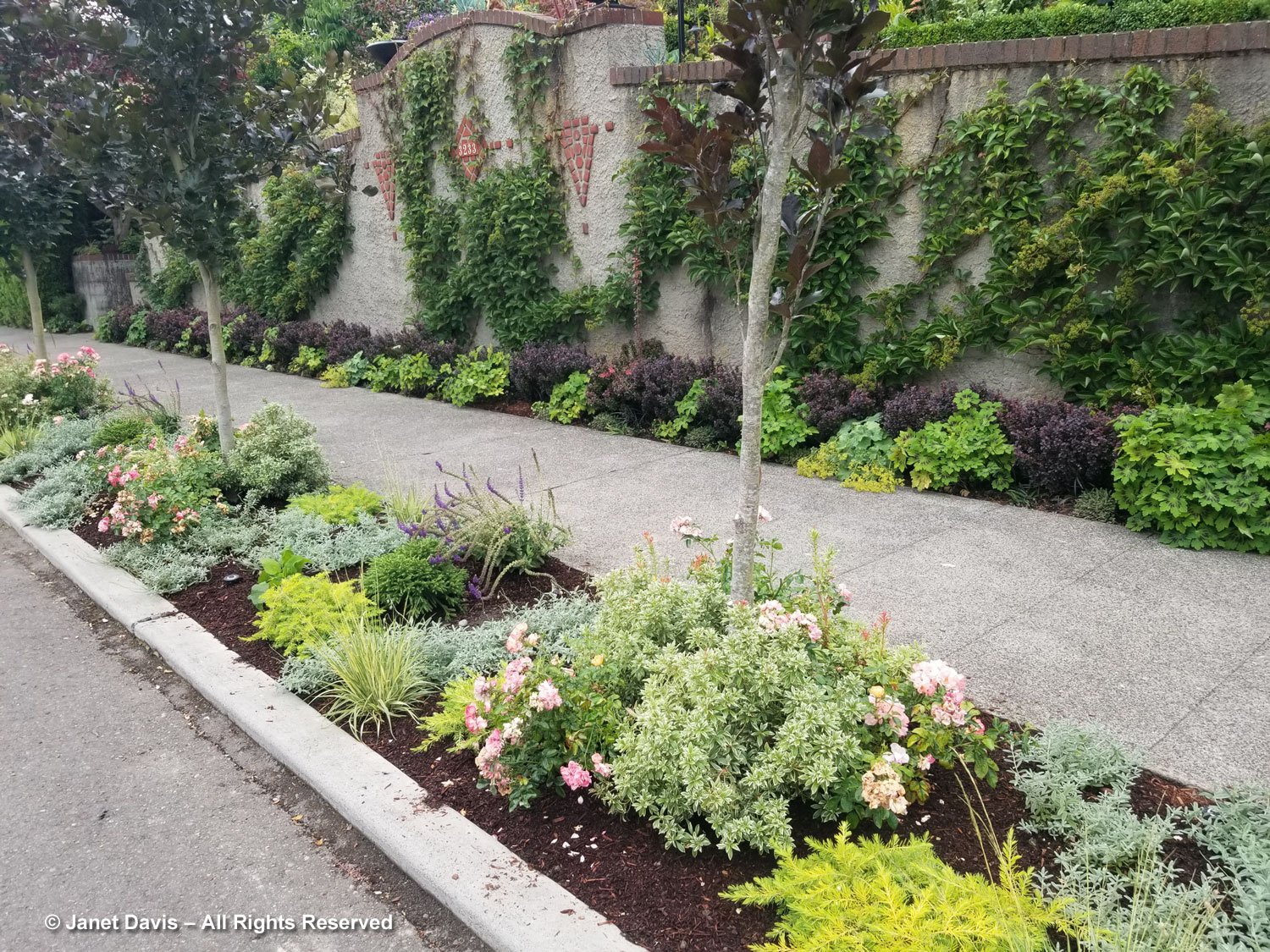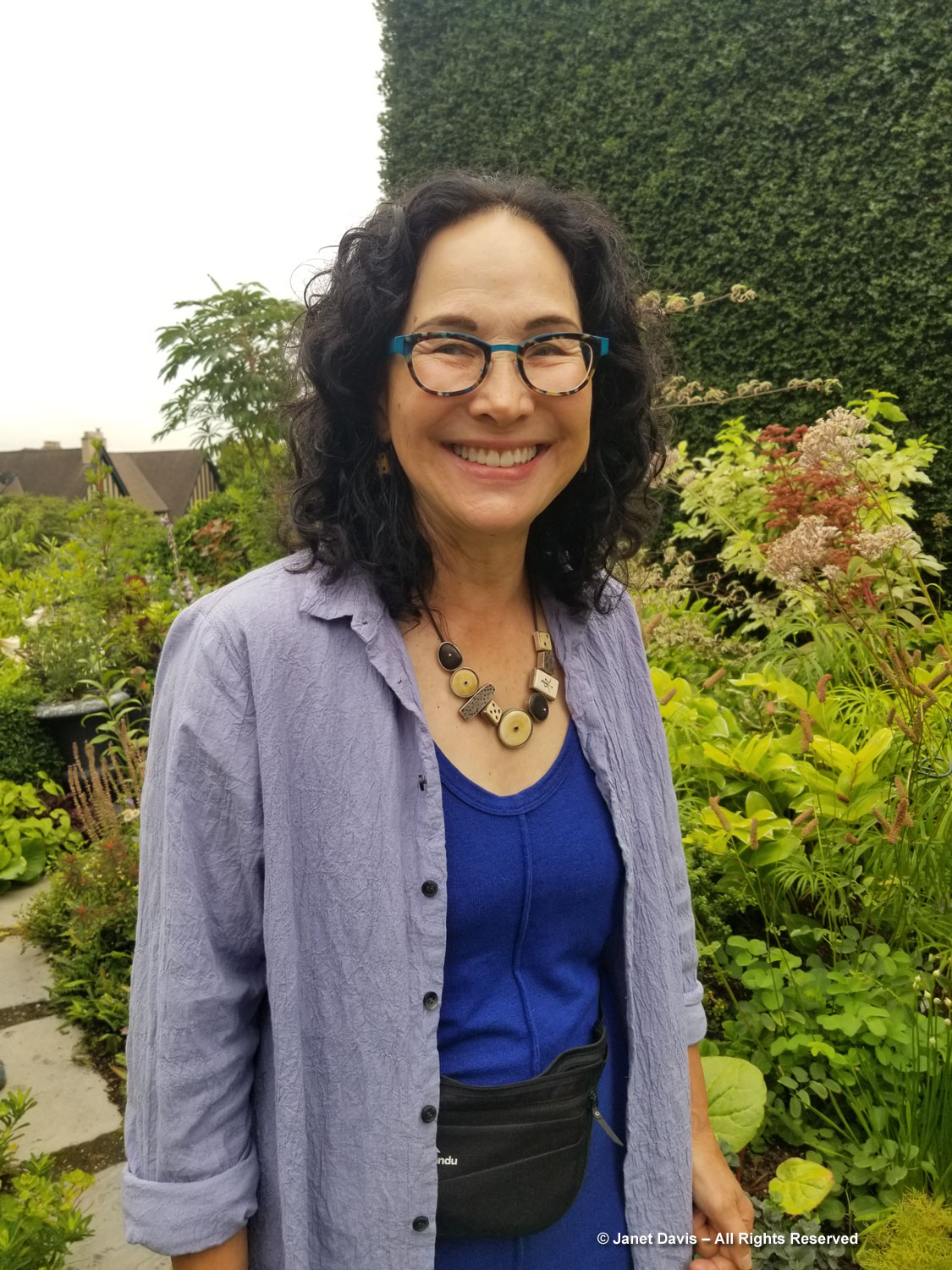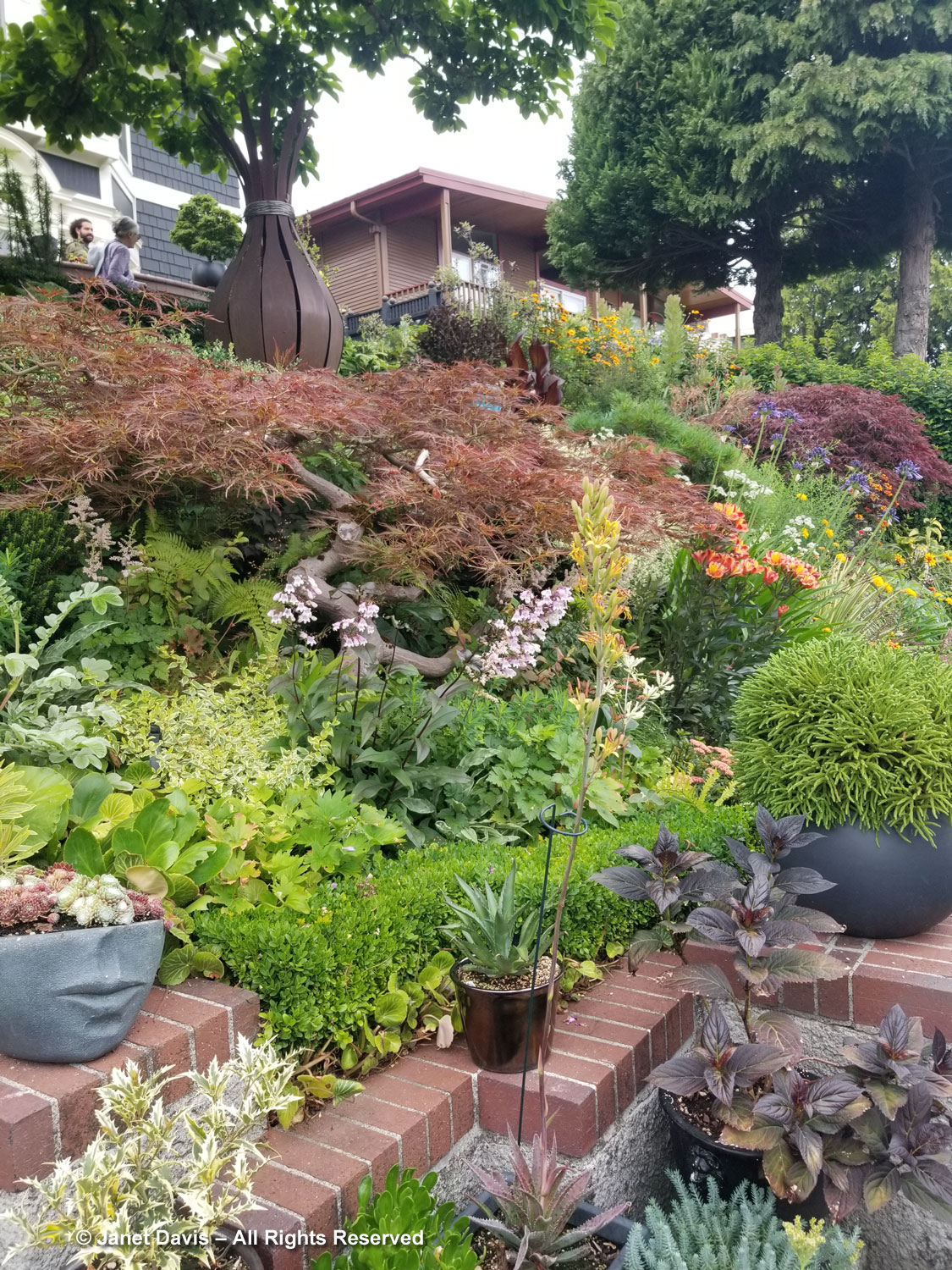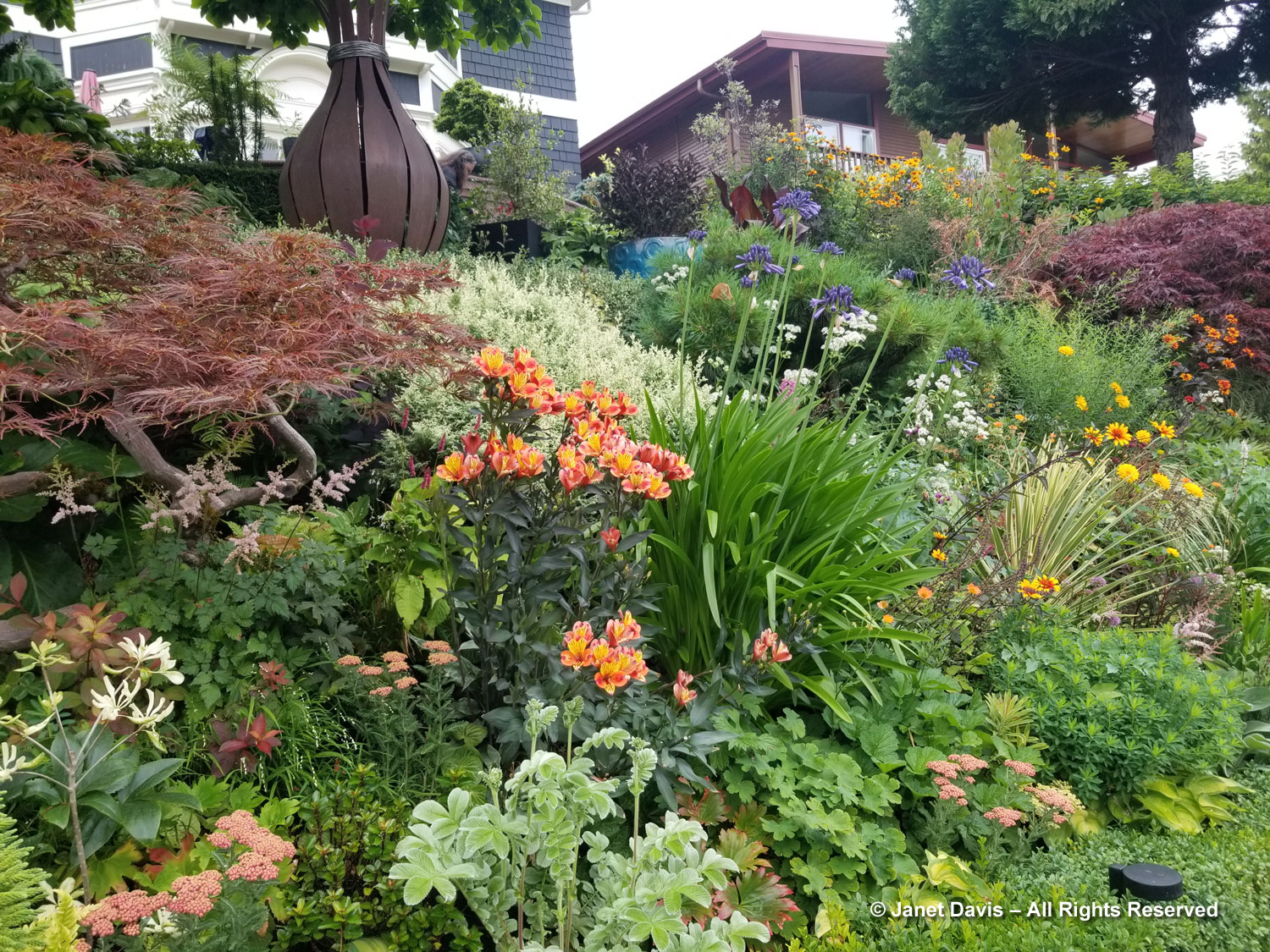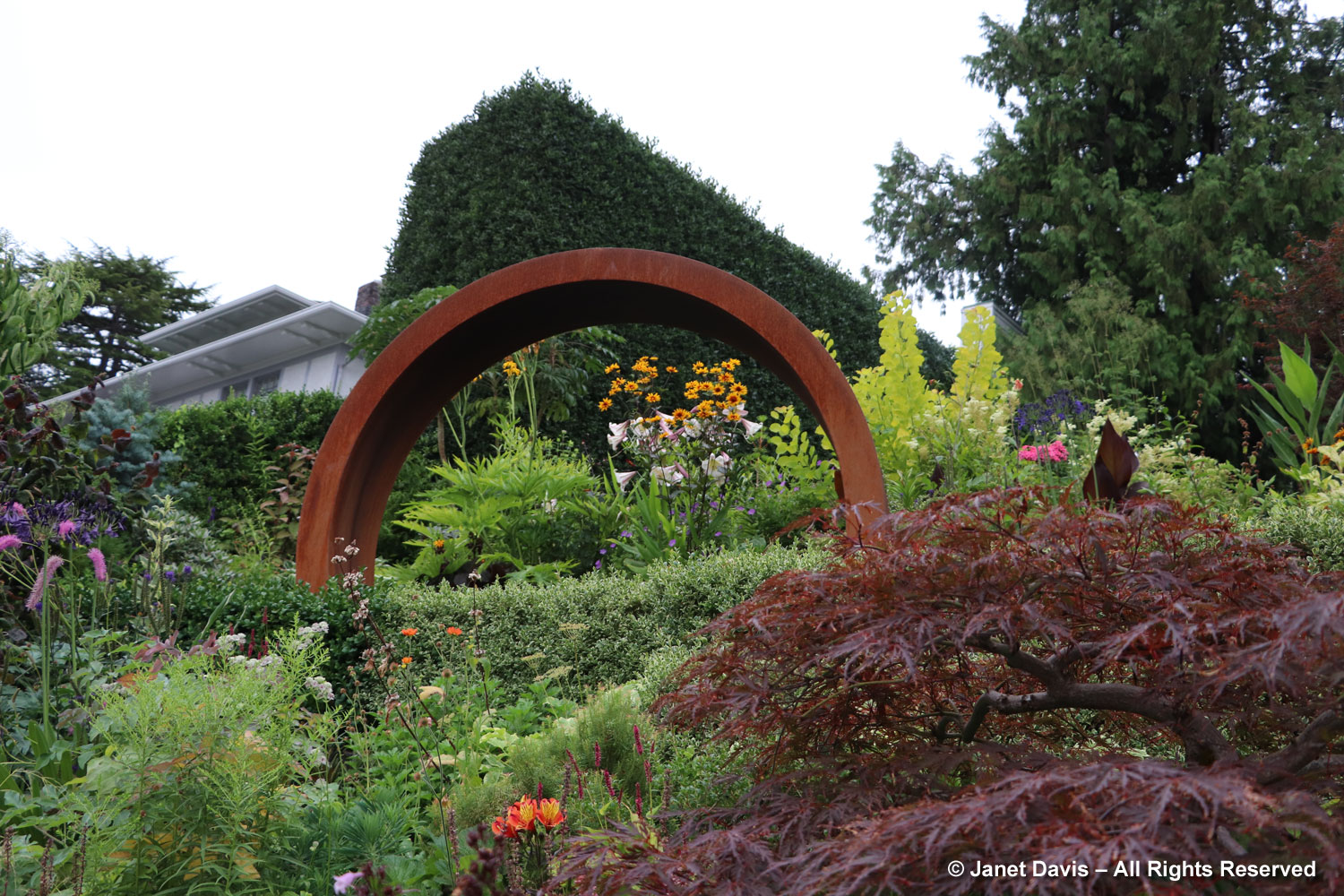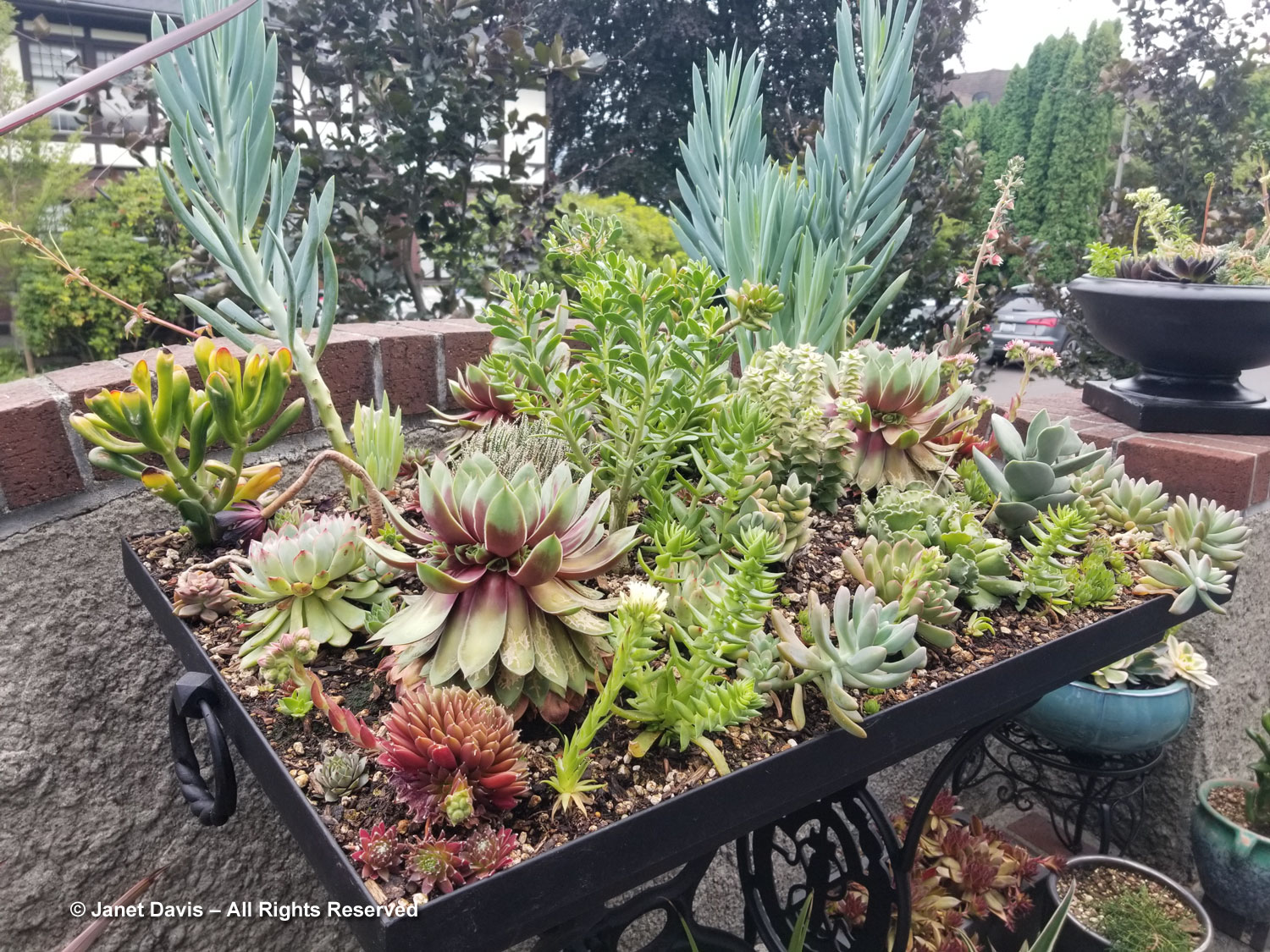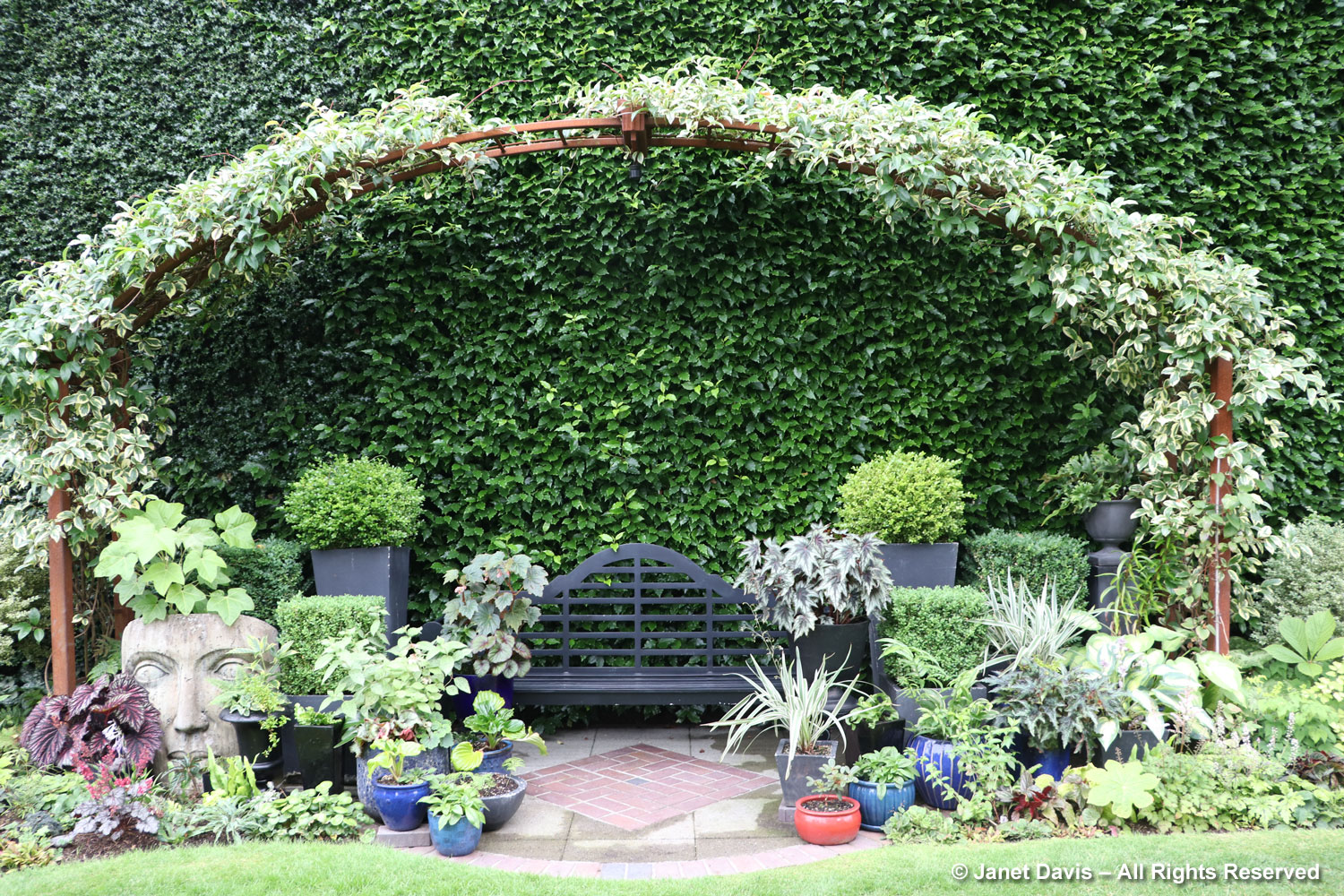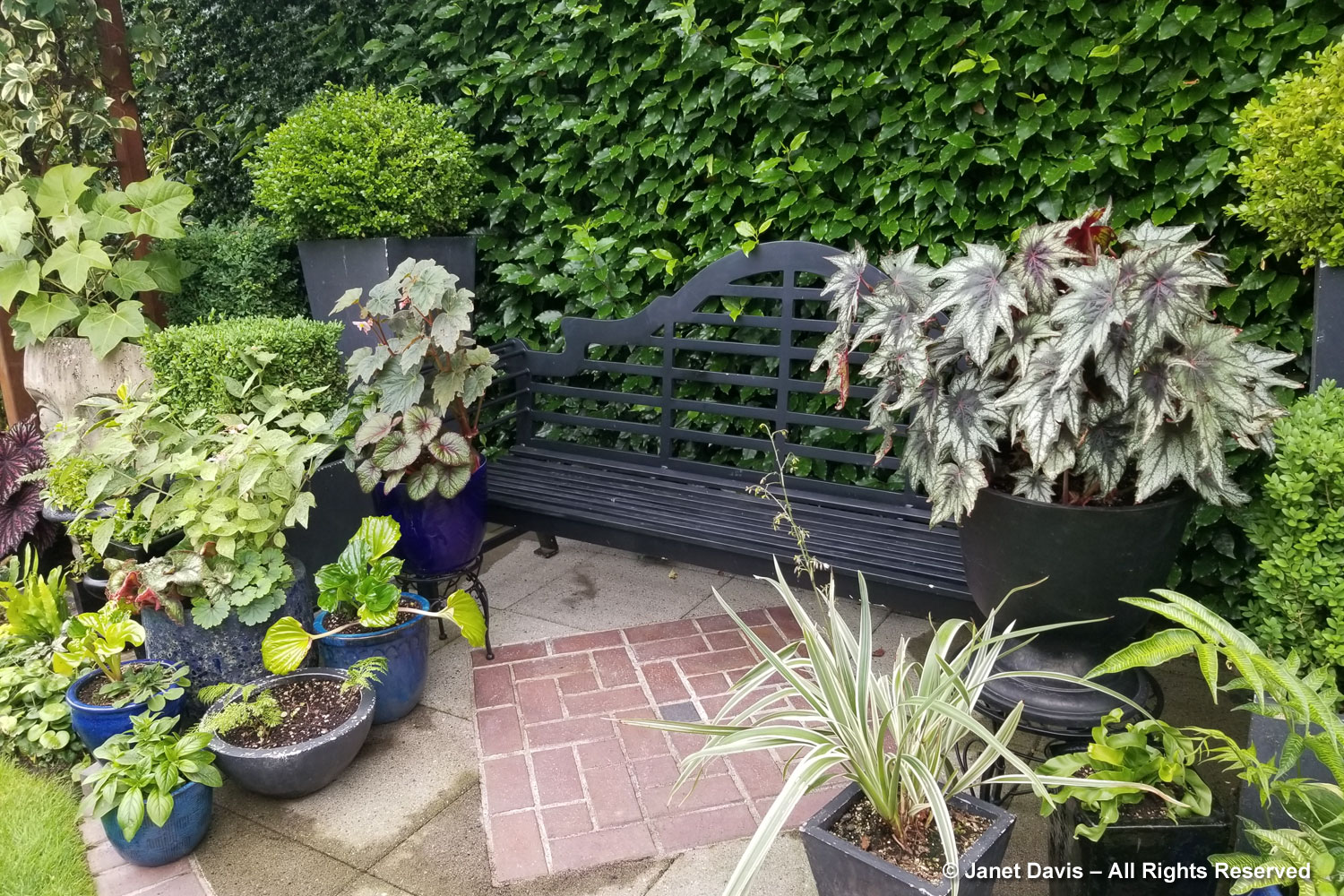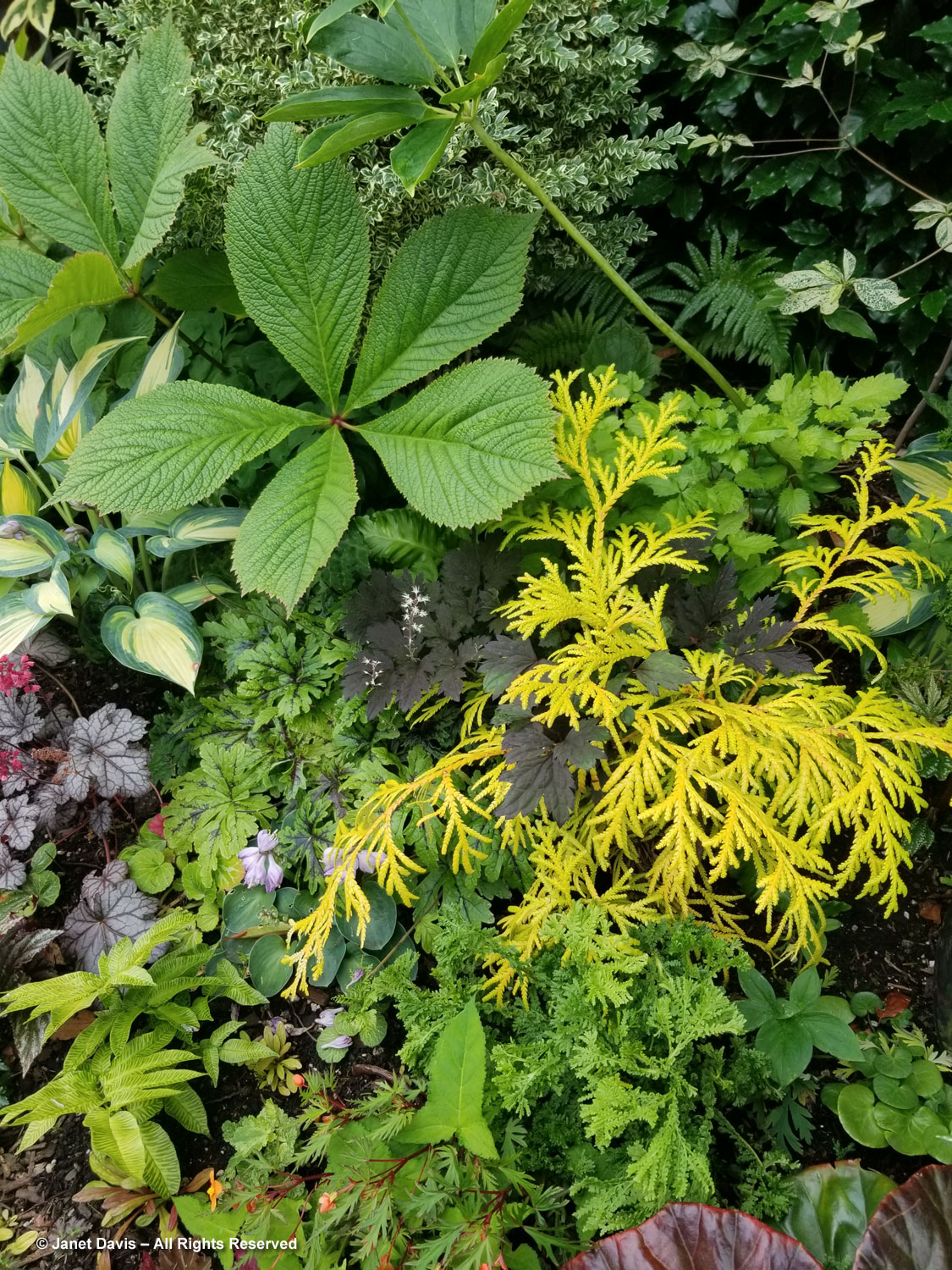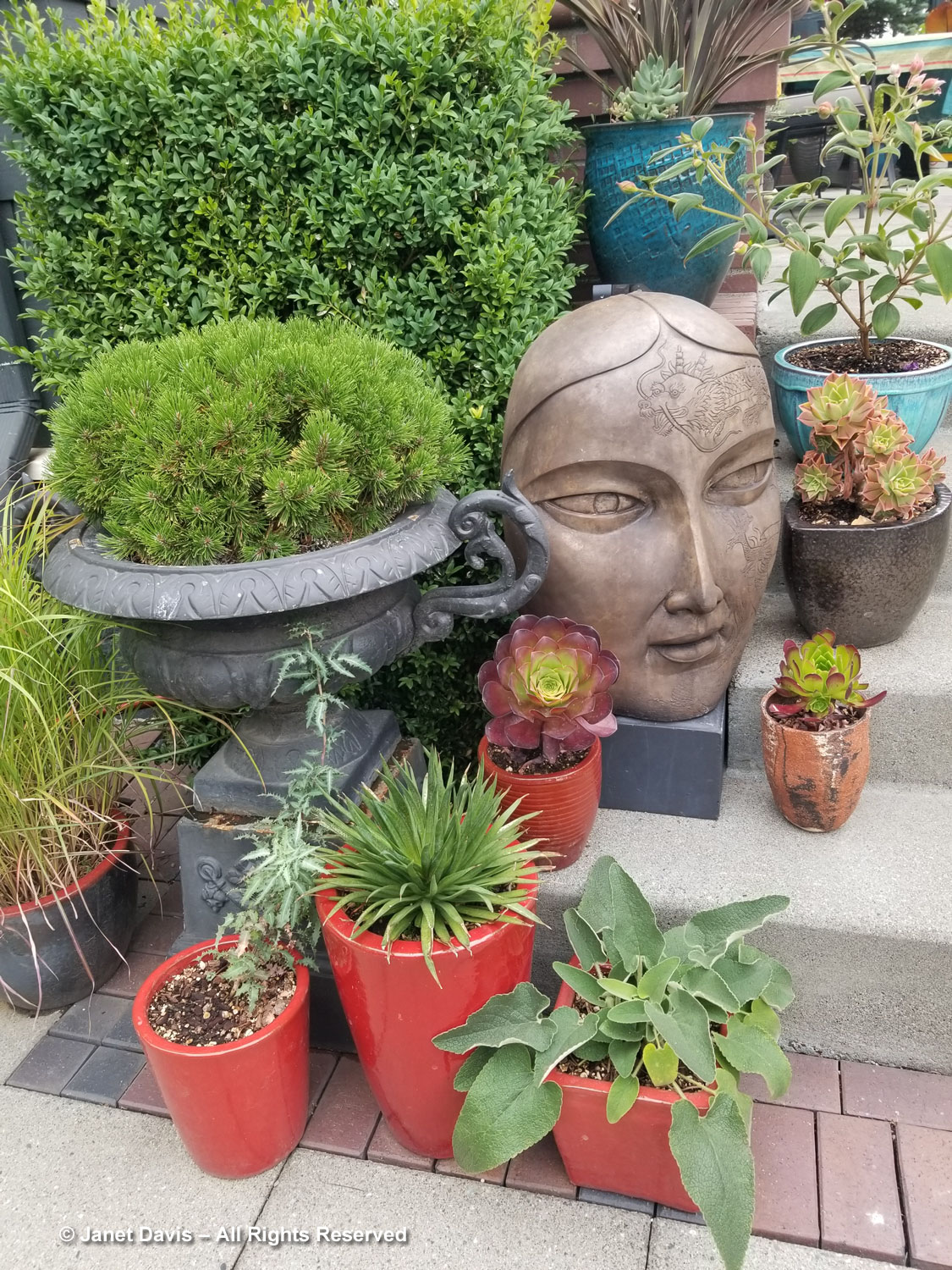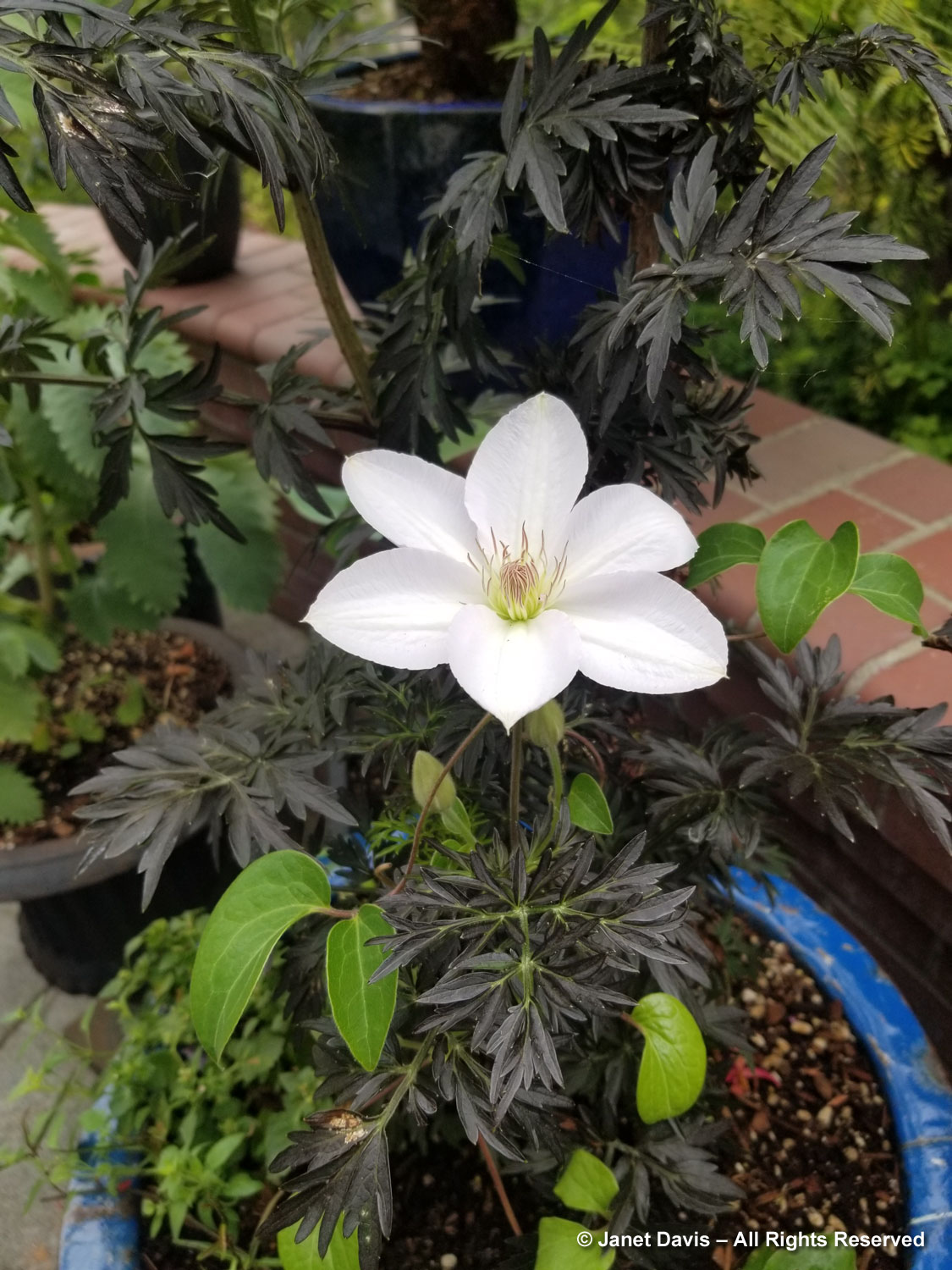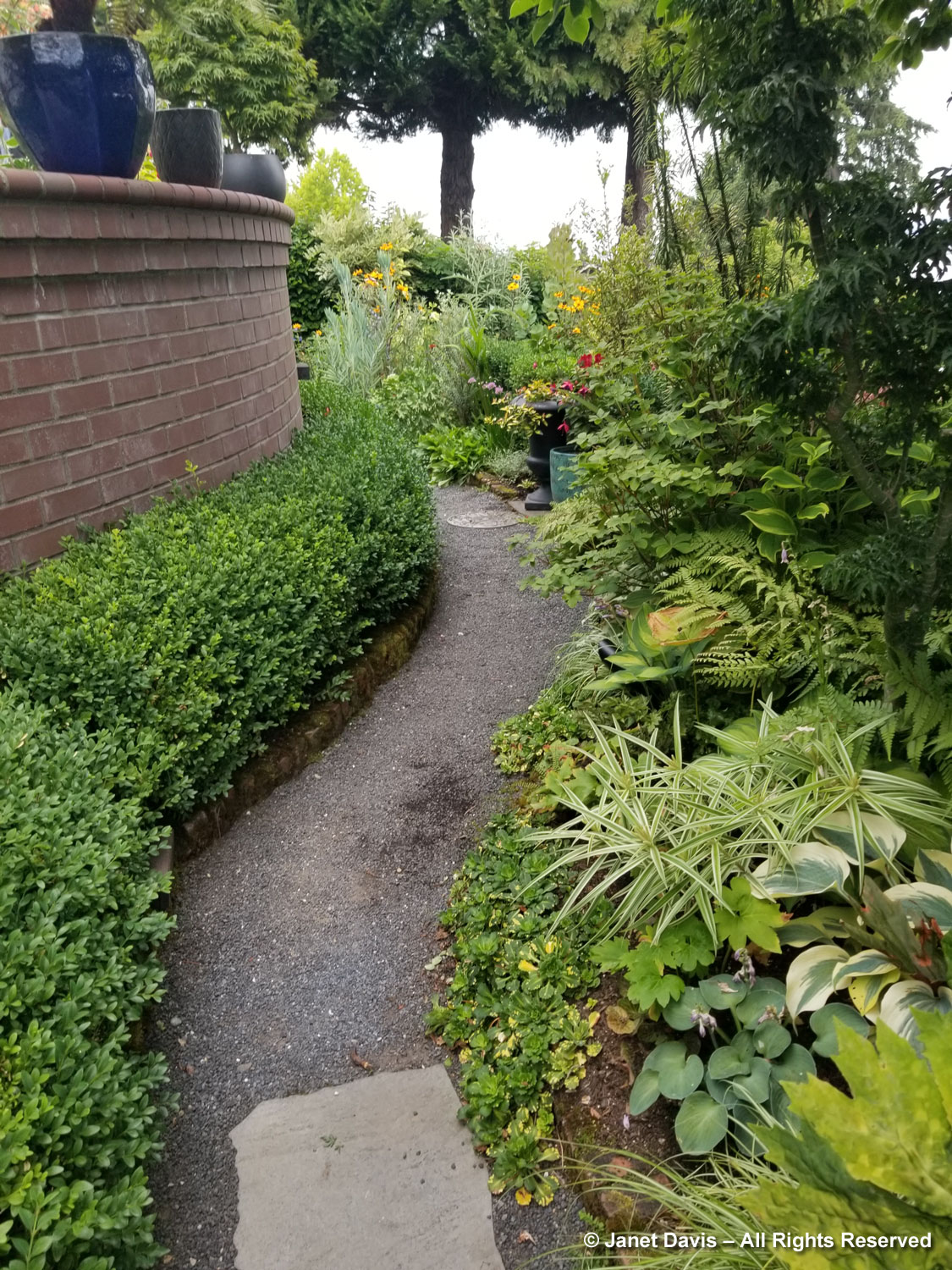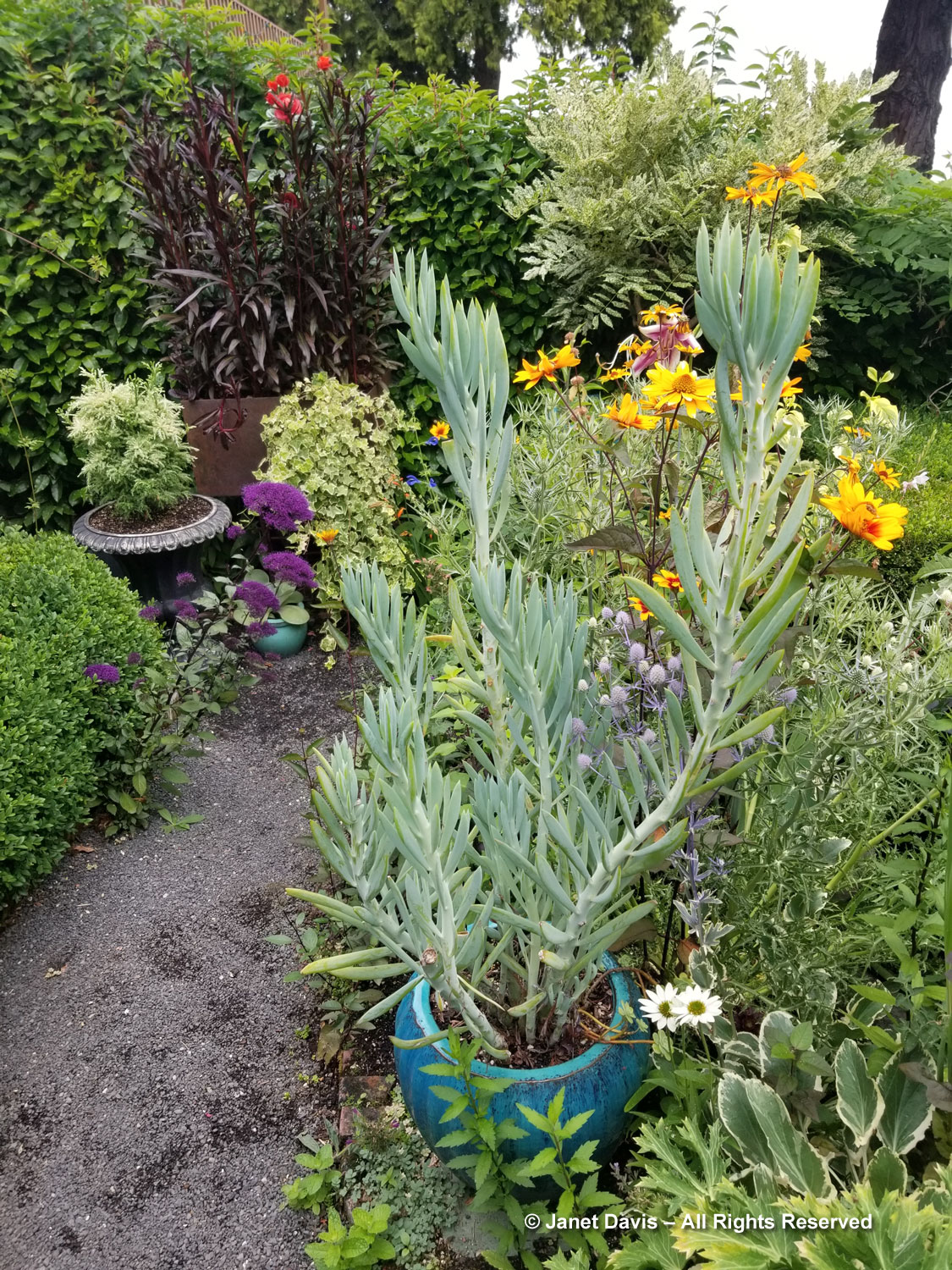If you’ve been writing about gardening for almost 40 years, like me, the name “Nancy Heckler” rings all kinds of bells. In the early 2000s she was a west coast garden maven whose massive edibles garden on the Hood Canal in Washington State was featured in a cover story of Martha Stewart Living magazine and on her television show, as well as in other magazines. Old columns in the Seattle Times list her favourite cultivars of the 140 kinds of vegetables and fruit she grew in her 5000-square-foot (!!) vegetable garden. In 2008, when she moved to this 1/3-acre forested property in Indianola on the Kitsap Peninsula (where she was garden manager of the resurrected Heronswood for a few years in 2013-14), vegetables would not be part of the equation, though she tried for a while in raised beds. “But there wasn’t enough sun, it was a bust”, she told Times writer Valerie Easton. Enter woodland gardening and hydrangeas, like the one bursting with frilly-pink flowers, below….

….. against the wall of Heckler’s lovely, soft-gray-green, 1940s house.

The wall is lined with containers of choice shrubs in that same gray-green palette and adorned with a raven plaque, keepsake art from the much-loved former studio of Bainbridge Island sculptors George and David Lewis.

My visit to the Little & Lewis Garden Gallery – on a misty September day in 2005 – is one of my fondest memories of the Pacific Northwest. (Their exquisite chanterelle fountain for Heronswood is featured in my blog on that famous garden, link below.) But I digress…

The side porch, flanked by a gorgeous Cryptomeria japonica and flowering Schizophragma, has a little tableau that will be familiar to all real gardeners – boots left on an angle to dry all the coated mud!

A deck at the back of the house is a leafy sanctuary and features a few of the 100-plus hydrangeas Nancy grows in the garden.

I could imagine sitting in this chair, surrounded by textural, verdant plants. As Nancy wrote in the text of our guide: “I planted every shade tolerant woodland plant I could get my hands on, anything with TEXTURE. That is what my garden is to me—form, texture, layers and all shades of green with very few flowers. Perhaps not enough color for many folks, but it’s a very relaxing palette.”

A gate leading into the garden passes what was originally an old out-building that Nancy turned into her lamp design studio.

In front is a container with Japanese umbrella pine (Sciadopitys verticillata), one of many conifers planted in pots in the garden. When the outgrow their container, Nancy digs them up and gives them away.

I was allowed a peek inside Nancy’s lamp-making studio, Luminola, to see her exquisite, one-of-a-kind, vintage creations. She finds old lamps at antique malls, estate sales, flea markets and garage sales, then rebuilds them completely. There is something so wonderful about unusual lighting (says this woman who’s painted lots of lampshades in her time!)
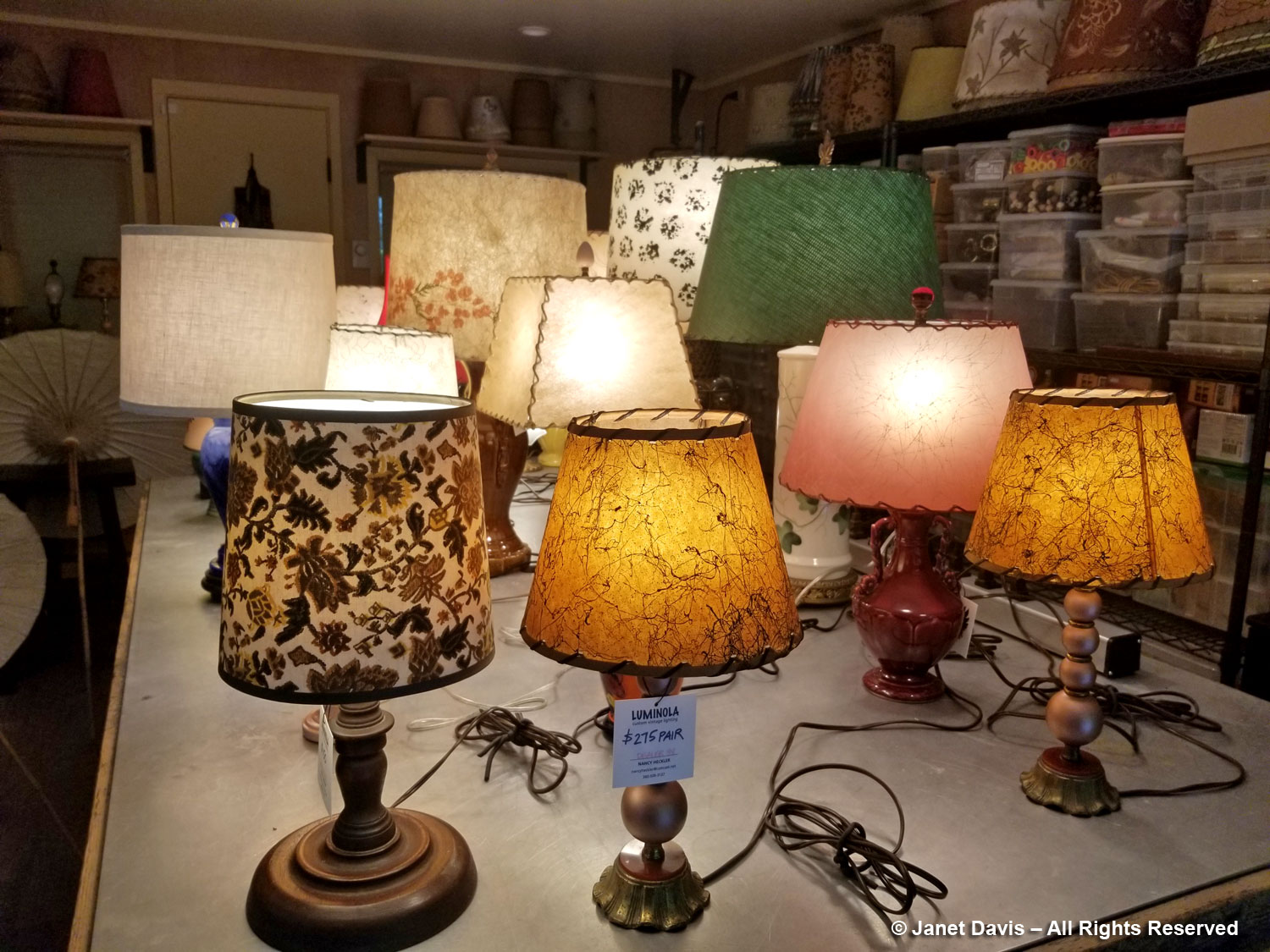
Then it was into the garden itself, down a path past a rhododendron with silvery new foliage underplanted with ferns, hostas and other woodland treasures….
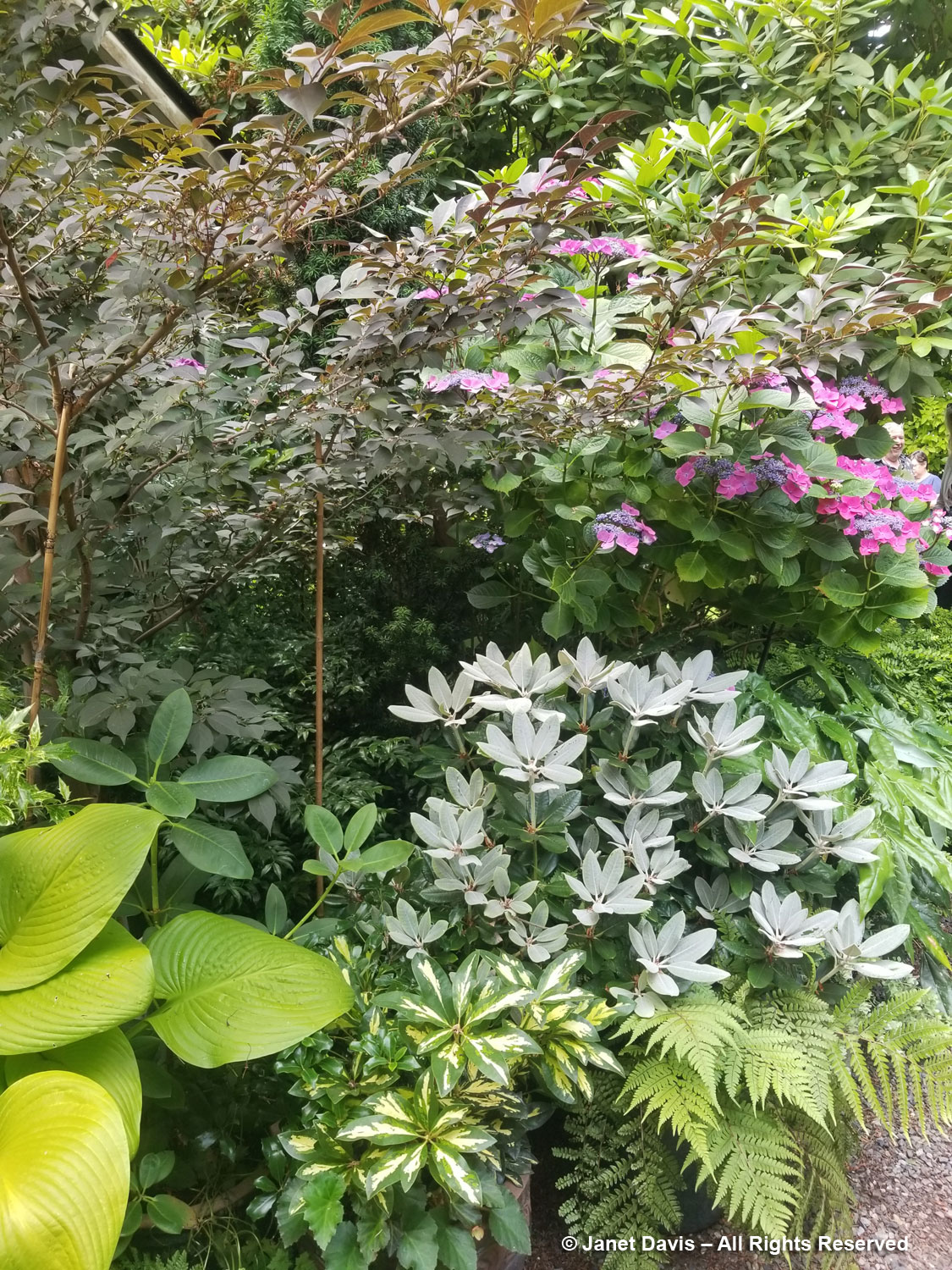
…. and more hydrangeas, including this beautiful lacecap.

If someone said, I’d like a ‘quiet green garden with touches of brown’, most people would furrow their brow and wonder how that could be artfully done. Voilà…. (And now I want a brown glass garden lamp!)

Paths wind through Nancy’s garden – and I confess I was using both camera and cellphone to capture it, and going back and forth myself – so if I’m travelling in the wrong direction on occasion, forgive me. That fabulous blue-flowered lacecap hydrangea is….
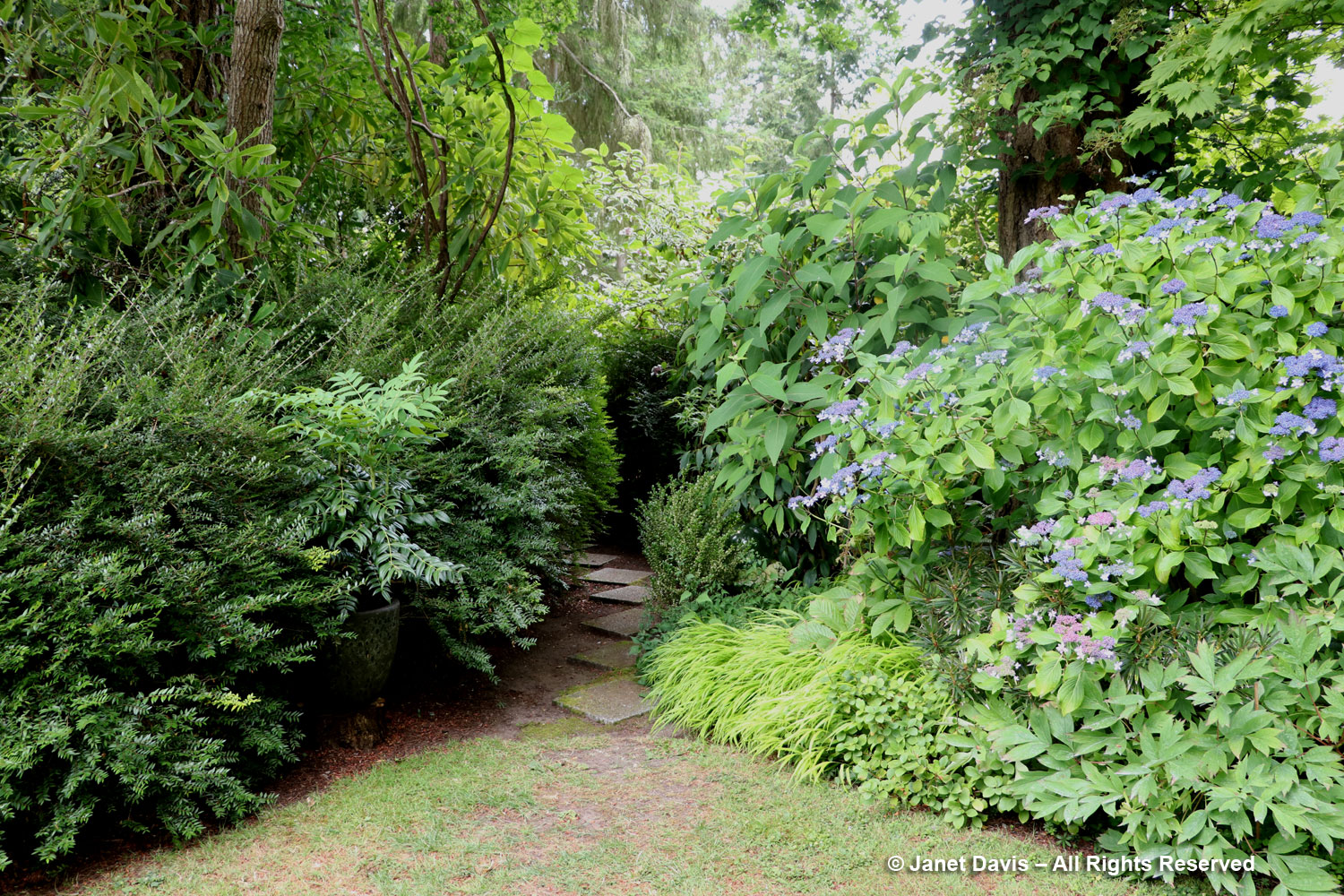
…. Hydrangea macrophylla ‘Izu-No-Hana’, underplanted with ‘All Gold’ Japanese forest grass (Hakonechloa macra ).
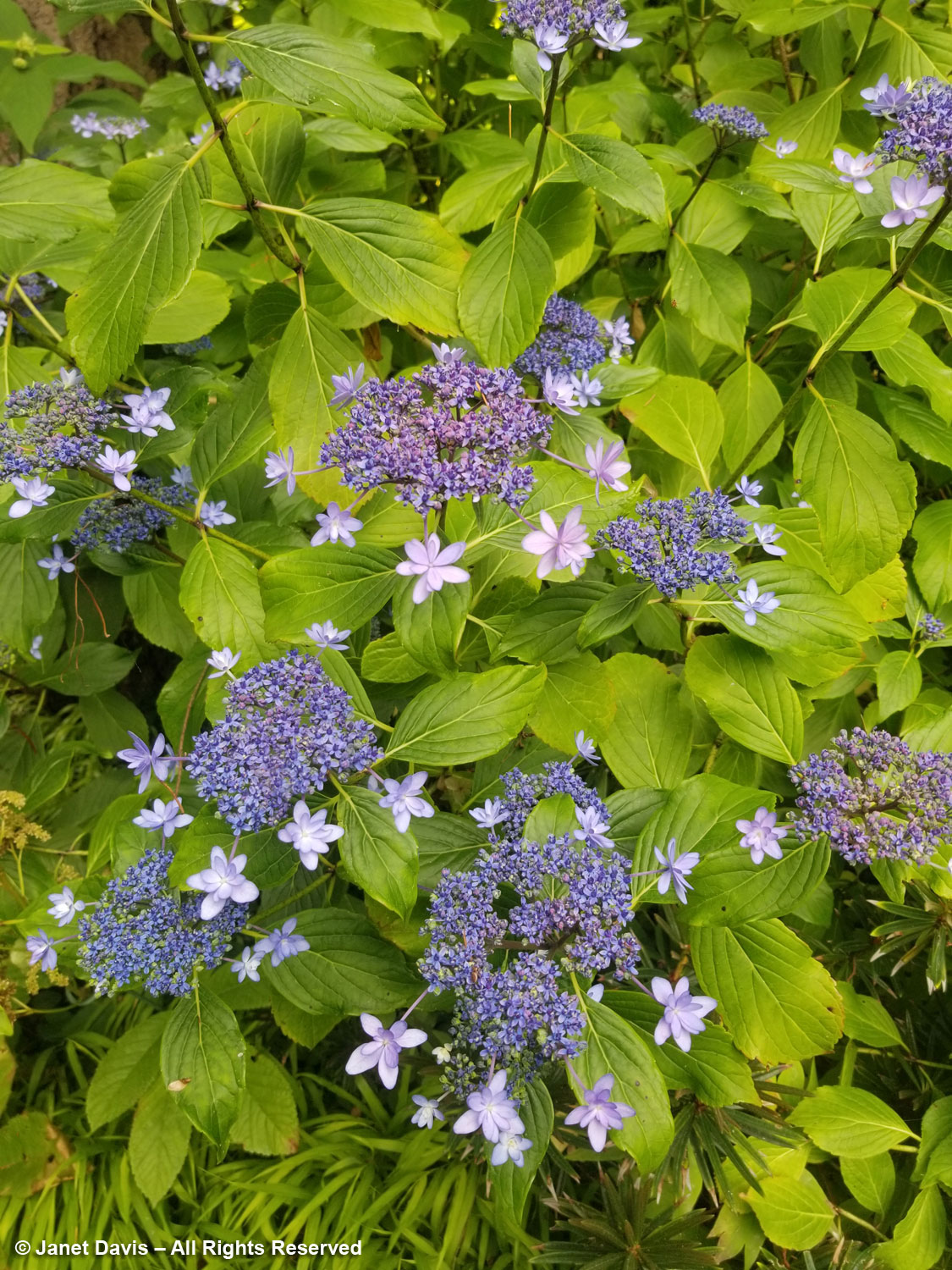
Nancy’s path though the plantings illustrates a simple bit of geometry: turn boring square flagstones on the diagonal and you have diamonds! Much more interesting!

In the centre of the big trees and dense understory of choice woodlanders is a patch of lawn, creating a welcome bit of negative space.

I liked the simple artfulness of the twig spheres.
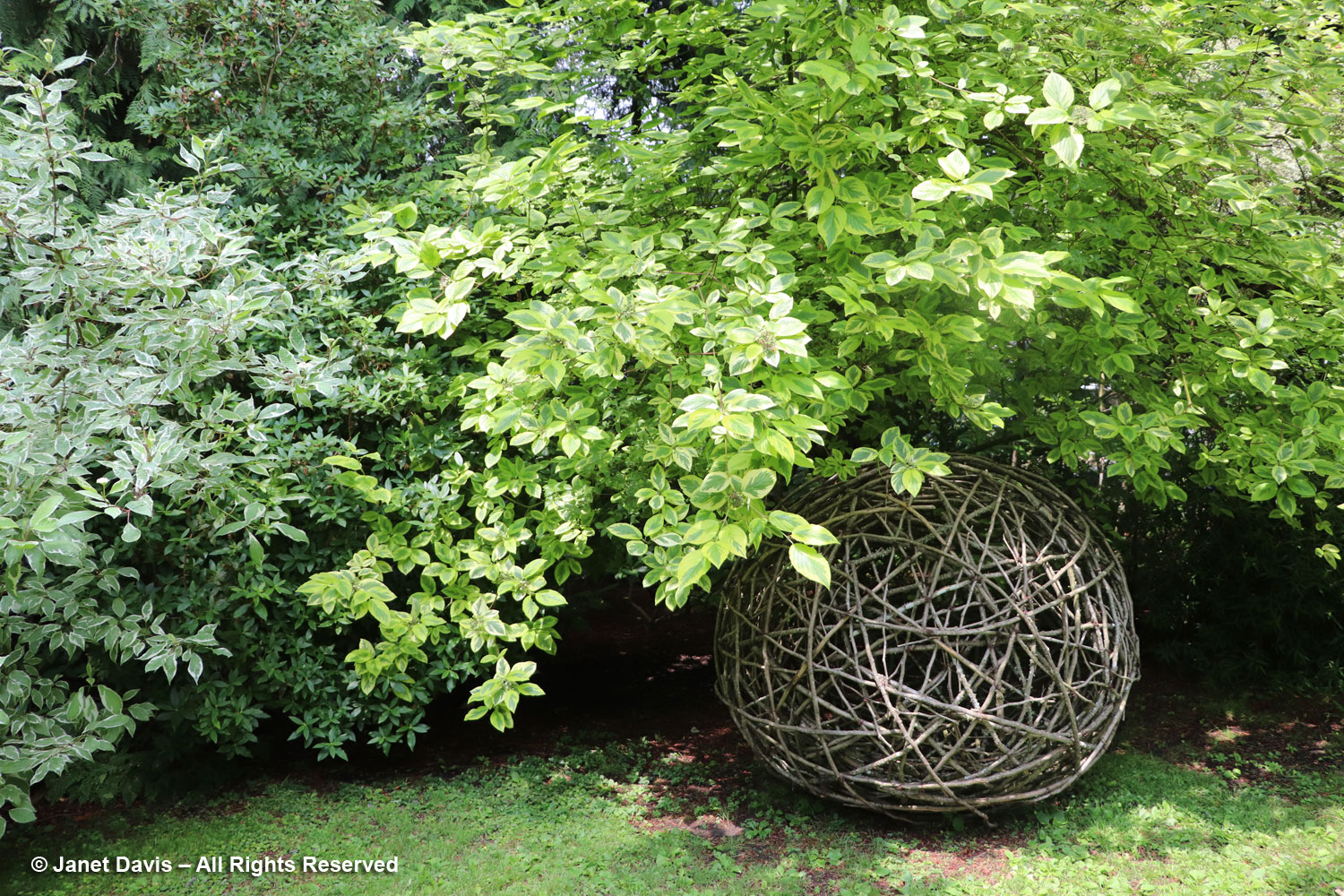
And I loved the two-tone speckled lilies, adding just a touch of colour to this green setting.

Nancy herself was graciously answering questions here.

Perhaps the most charming and surprising features of the garden were colourful, cotton-and-bamboo parasols poised above hydrangeas to serve as temporary shade structures during extreme summer heat. I believe this double-flowered variety is ‘Miss Saori’.
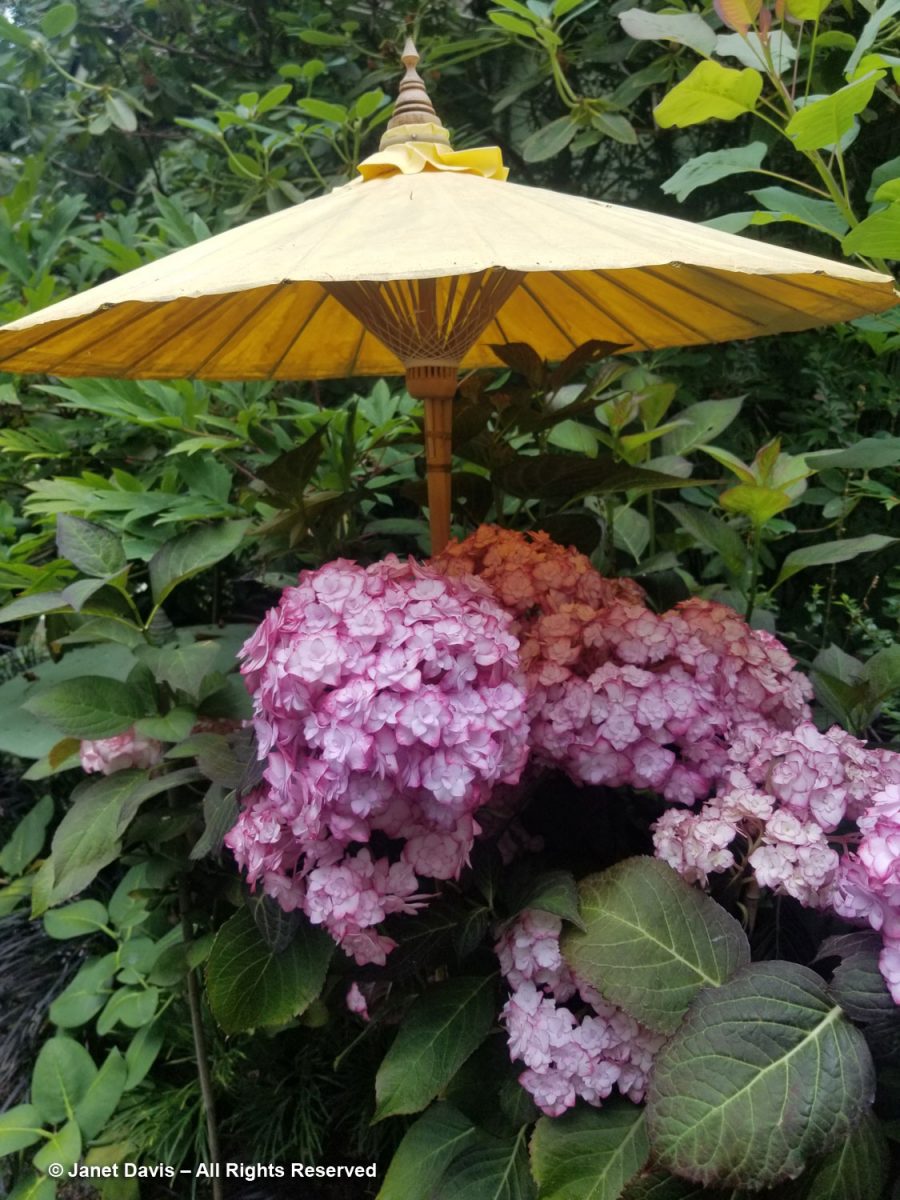
The parasols seem to have done their job well.

Bigleaf hydrangeas, of course, are native to cool, mountainous regions of Japan, and the parasols, rather than looking out of place, seemed to be an integral part of the theme.
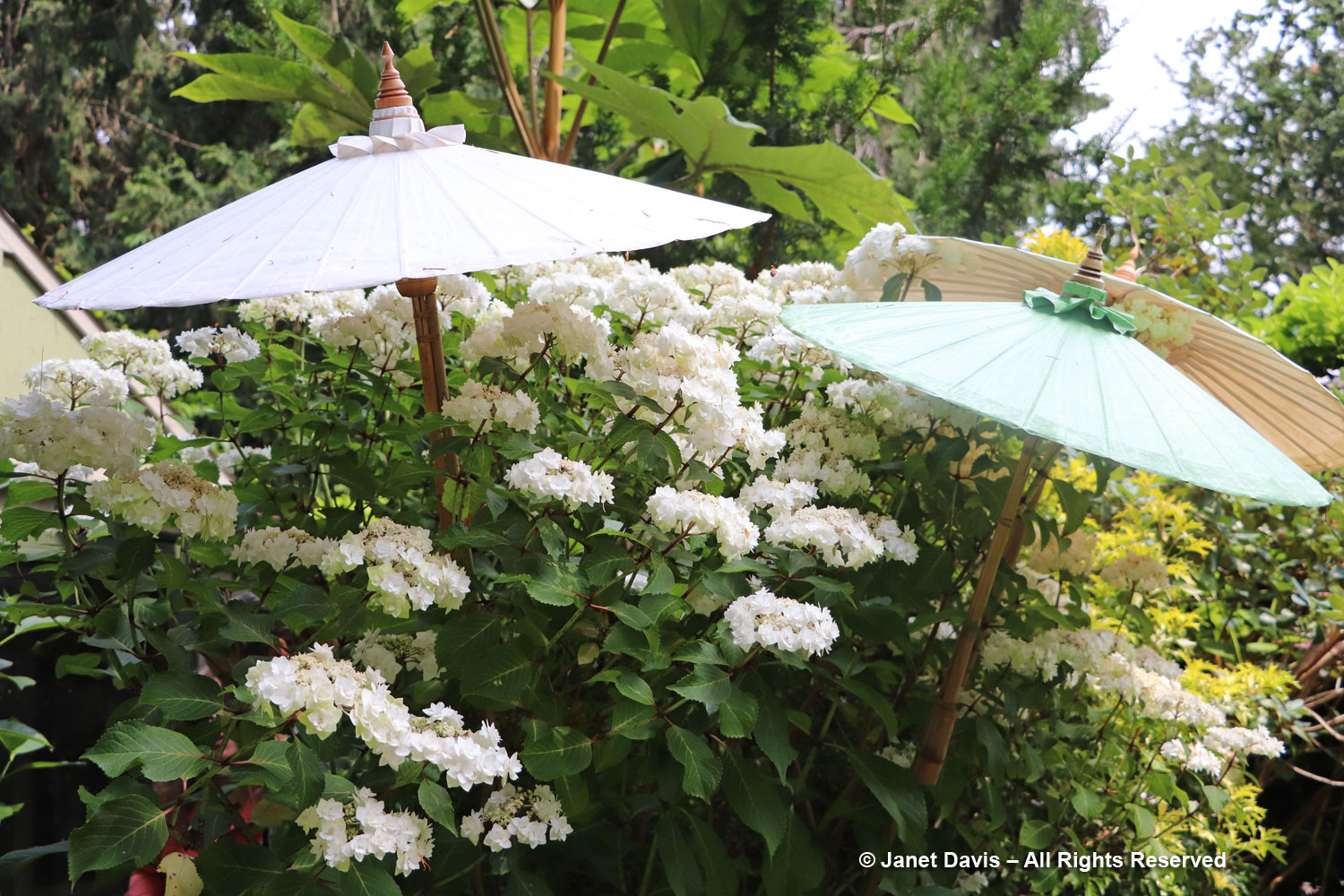
Or perhaps I’ve just seen too many Japanese woodblock prints with lovely women in kimonos carrying bamboo umbrellas, like these 18th century ukiyo-e paintings.
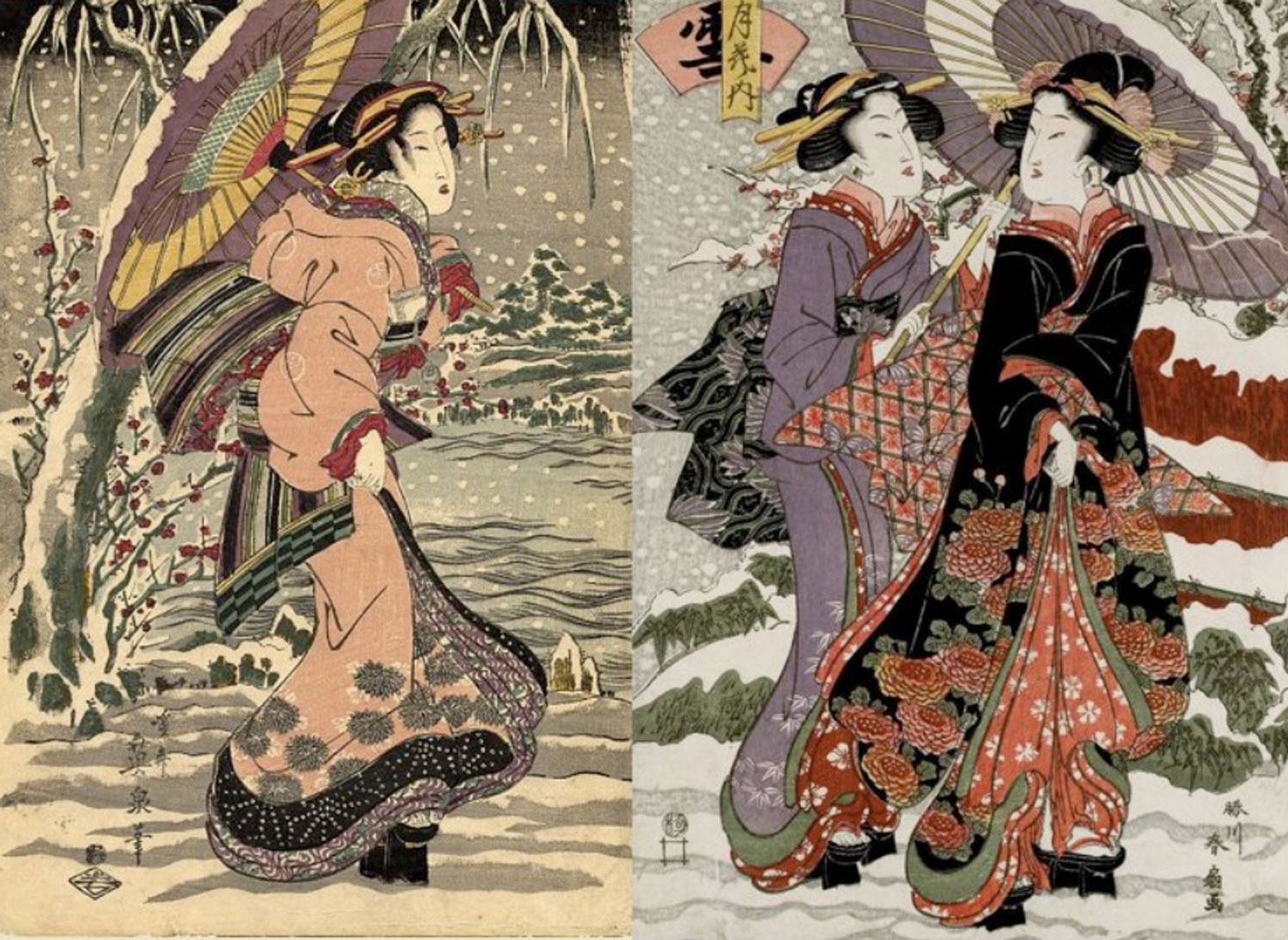
Scenting the air under the big trees was Harlequin glorybower (Clerodendrum trichotomum).

A skirt of driftwood adorned the trunk of a big conifer – found sculpture from Indianola’s beach.
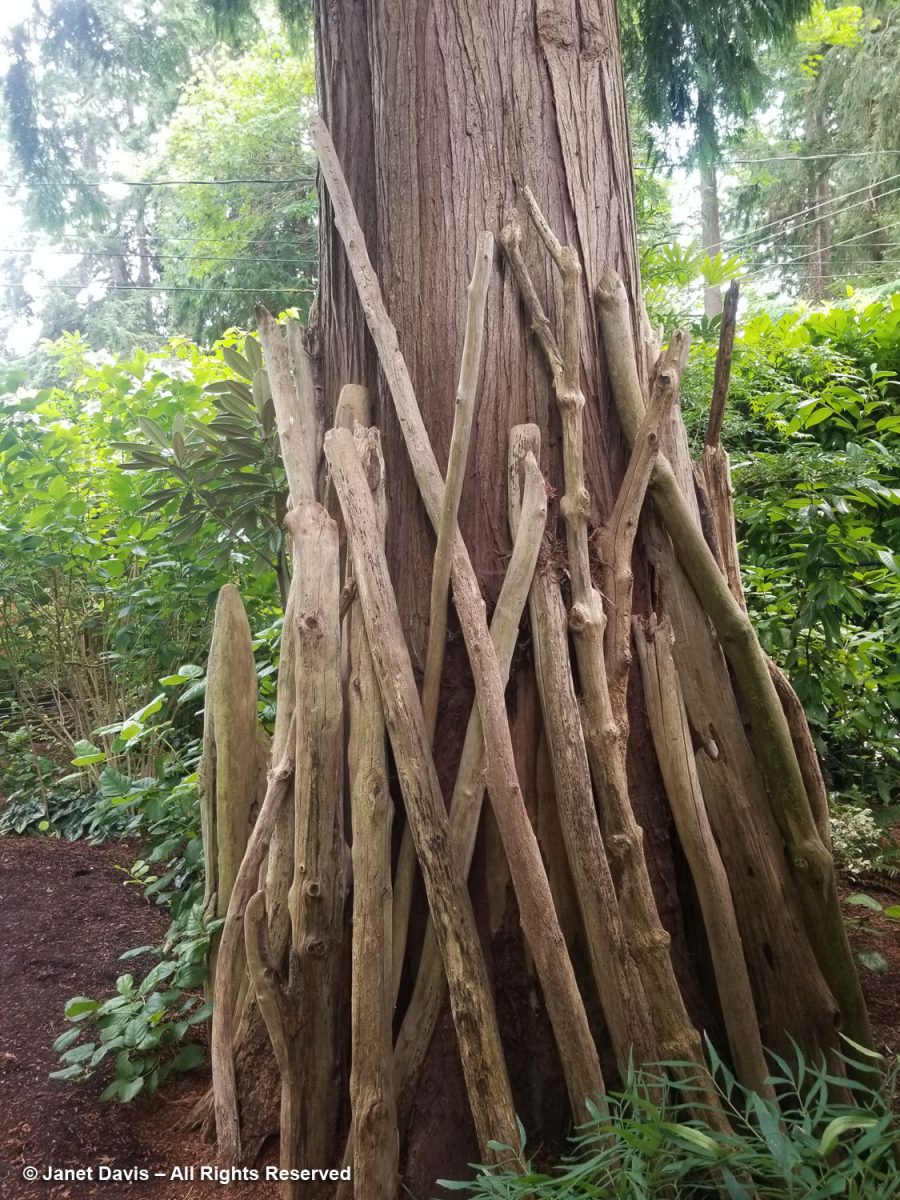
This clever pairing echoed the dark foliage of Hydrangea Eclipse® in the veins of the Japanese painted fern (Athyrium nipponicum var. pictum ‘Regal Red’).
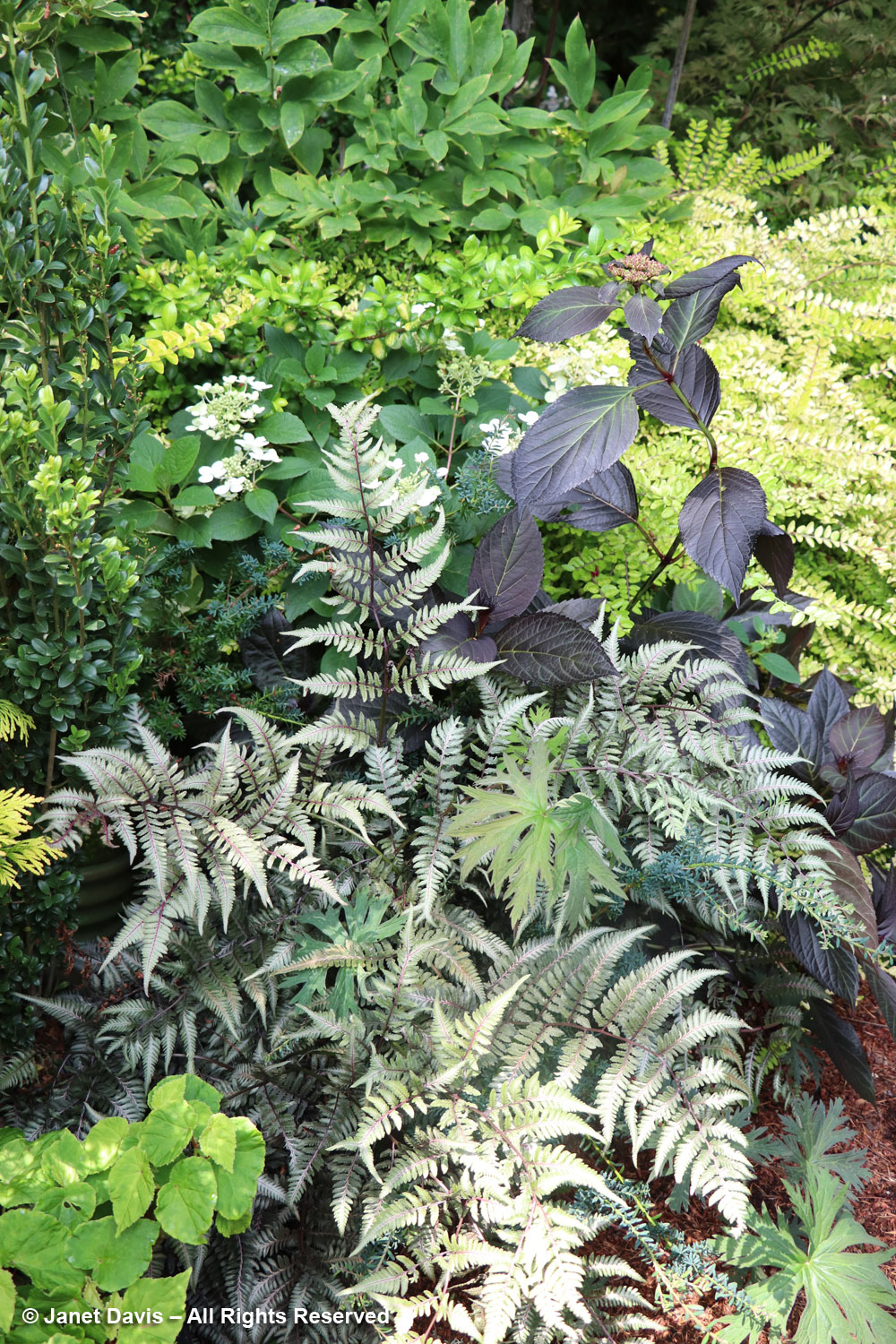
Everywhere there were little vignettes that commanded attention – and much more time than we had!

When it was almost time to leave, I headed to the front of the house where the door was graced with the perfect aquamarine pot to show off the swirls of the Rex begonia ‘Escargot’. Has a snail ever looked this lovely?

A gate at the front led into the woodland via a different path – I think? Pretty sure I hadn’t seen that Podophyllum ‘Spotty Dotty’ before….

It is always a treat to visit a garden where the artful touches are as important to the gardener as the sophistication of the plants.

The path wound around toward the lawn at the back with yet more hydrangeas and shade-loving perennials….
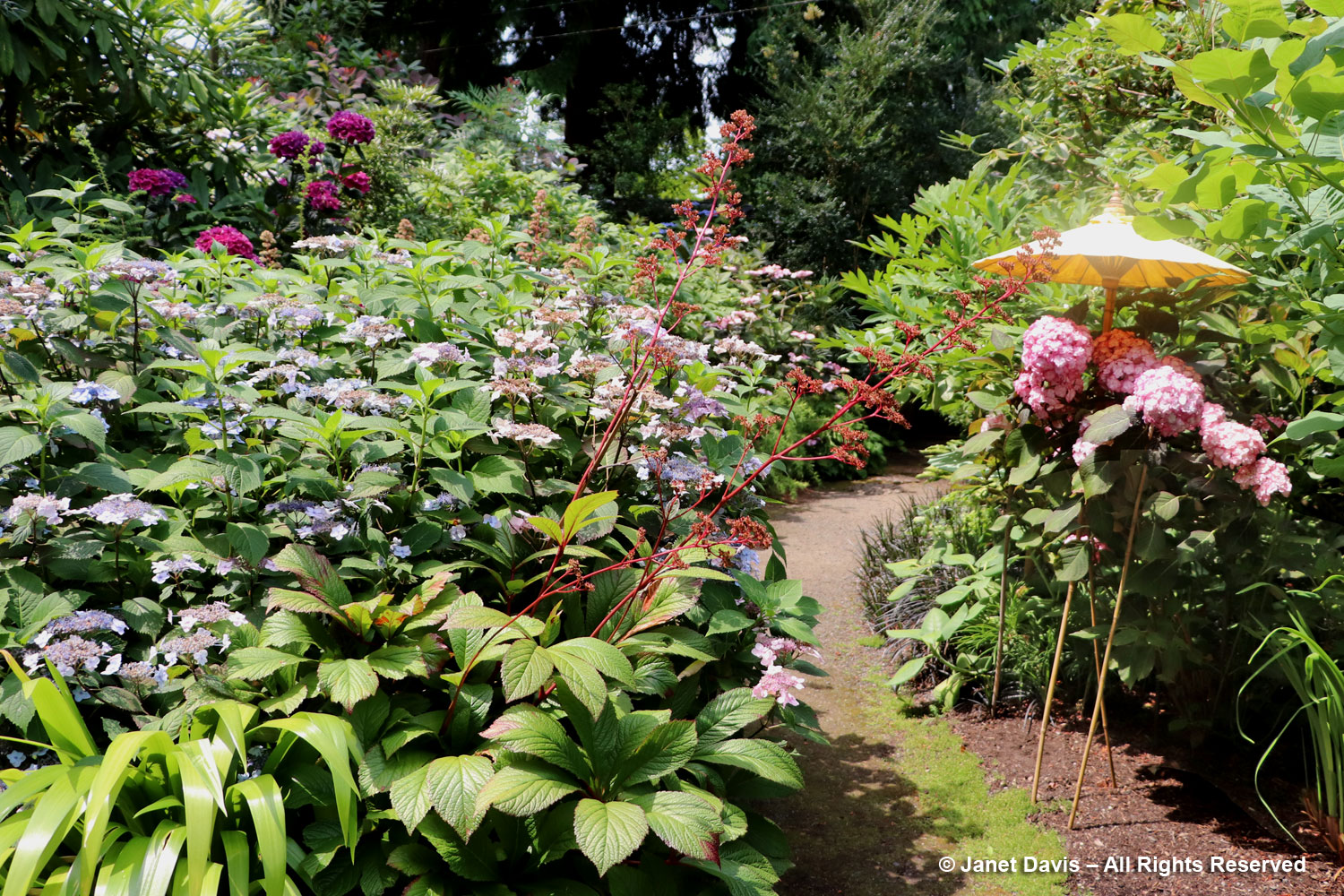
…. including these gorgeous Rodgersia seedheads.

As usual, in looking at my friends Pam Penick’s and Loree Bohl’s blogs, I see that regrettably I didn’t get to all the corners of Nancy Heckler’s beautiful 1/3-acre in the big trees of the Kitsap Peninsula. Be sure to have a look at their photos, too. And thank you Nancy, for sharing with us the wonders of your woodland.
********
Read more of my recent blogs on beautiful summer gardens of the Puget Sound:

